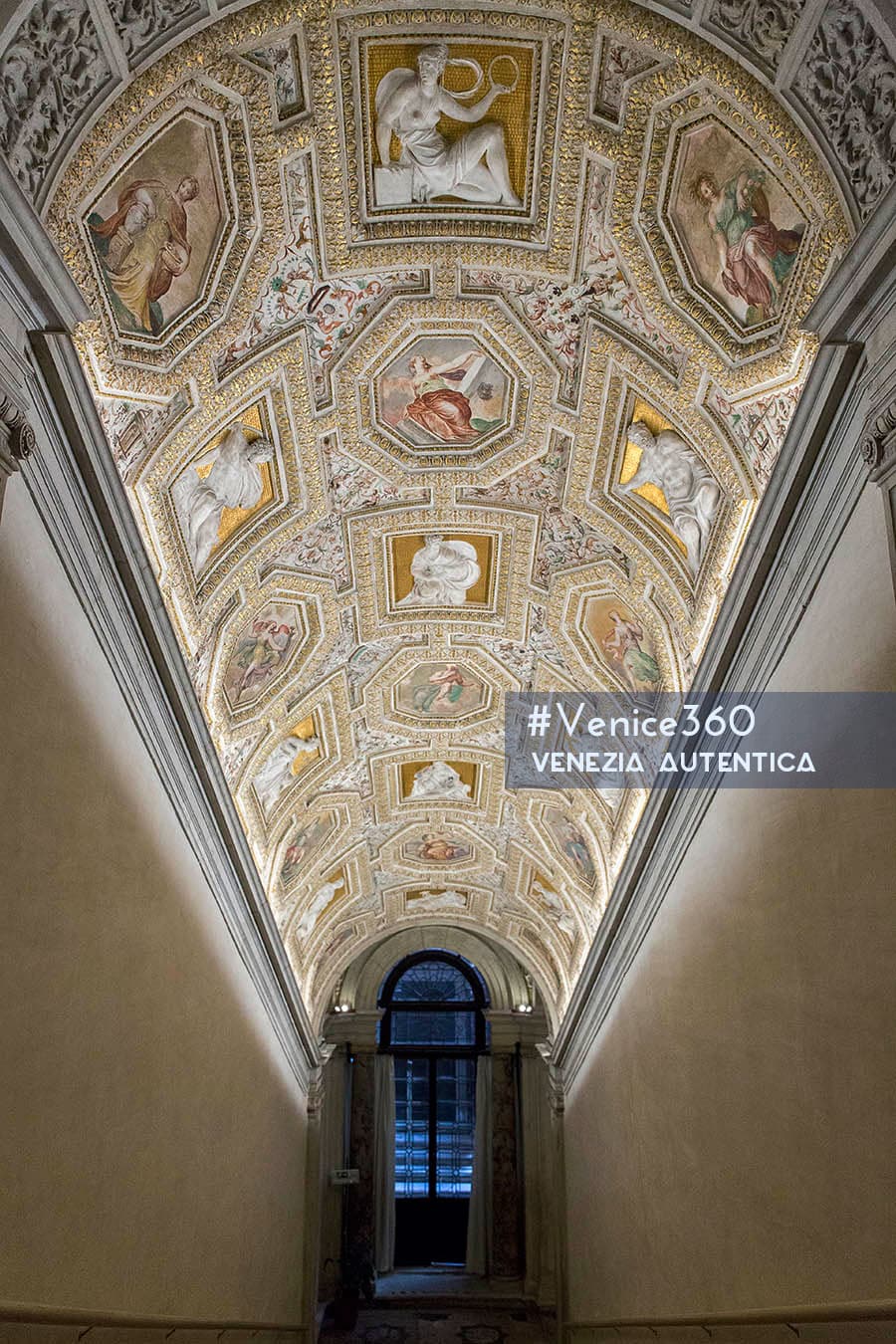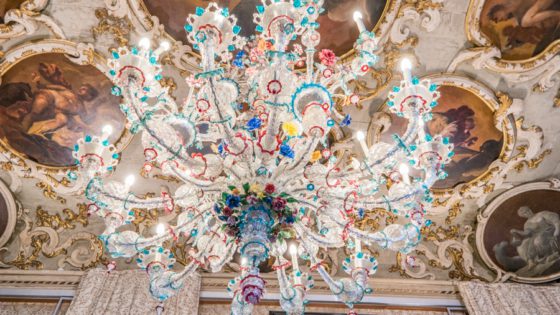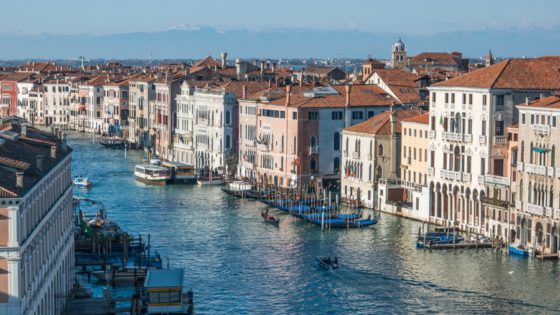
The Marciana Library owes the spark of its origin to Cardinal Bessarion, a major humanist, who donated to the Republic of Venice his valuable Latin and Greek library in 1468.
Given the greatness of the volumes making the collection, the city decided to build a brand new Library which beauty would reflect the importance of the works it hosted.
It’s only in 1537 however, thanks to the Doge Andrea Gritti, that the Serenissima began to build the Library, based on a design by the Florence born Jacopo Sansovino, which harmonized the classical Roman style with the surrounding Venetian architecture.
The Library’s original project included a majestic dome which would counterbalance those of the Basilica di San Marco, but when the construction was close to completion, in December 1945, it collapsed: Sansovino got arrested and had to personally repay for the damages. As a consequence, Jacopo Sansovino decided to substitute the dome with a broad terrace instead… definitely less risky.
The first 16 arcades were built by Sansovino himself between 1537 and 1553, with works of decoration continuing until 1560.
The arcades on the ground floor are of the Doric order; above is the Ionic order of the gallery.
The top of the building, on the outside, is surmounted by statues of classical gods, work of Alessandro Vittoria and other famous artists.
The entrance to the library by a great doorway, flanked by two frightening yet unarmed caryatids (also Vittoria’s work), leading to a monumental neo classic staircase decorated with stucco-work by Vittoria and paintings by Battista Franco and Battista dal Moro.
The first part of the staircase, work of Battista Franco, shows the Man under the influence of planets and stars, while the second part shows the virtuous Man reaching wisdom.
Finally, the stucco-work closes this metaphor with the representation of a Woman holding a book and a circle, meaning of eternity and symbolizing the power of knowledge.
Alongside the staircase are placed six Roman columns of rare marbles. The Vestibule on the first floor hosts a canvas on the ceiling by Tiziano, “La Sapienza” (“Wisdom”, 1560), and gives access to the Sala Monumentale.
The ceiling was decorated by Battista Franco between 1555 and 1559 with grotesque decorations on a gold background, and 21 tondo paintings, by seven painters: Andrea Schiavone, Paolo Veronese, Battista Zelotti, Giulio Licinio, Battista Franco, Giuseppe Salviati, Giovanni De Mio.
The most famous canvases are the three Veronese and three by Andrea Schiavone ones. While the imagery of the staircase had a metaphorical meaning, the paintings in the Library Hall are pragmatic day life representations: the knowledge should be used every day for the community’s good.
Between 1562 and 1572, in order to recreate a setting similar to that of antique libraries, imaginary portraits of ancient philosophers were placed around the walls. Two of these are by Veronese, two Schiavone and six by Tintoretto.
The new floor laid down in 1815 for the visit of Francis I of Austria, comes from another Sansovinian building: the Scuola Grande della Misericordia.
Further increase of the repertory came with the arrival of Napoleon which imposed the closure of religious orders which passed on their remarkable and rare collections to the Marciana.
Since the second half of the XVIII century, every manuscript was treated to a new leather ligature, and the winged lion (also known as Leone Marciano!) engraved on the front cover.
Nowadays the library counts around 1.000.000 Volumes and 18.000 manuscripts, among its collections are conserved the two most famous codices that have brought Homer’s Iliad down to us, a notable anthology of ancient Greek poets, known as Planudea, important manuscripts by Greek authors, Fra Mauro’s Map of the World, the Grimani Breviary, a masterpiece of Flemish illumination of the 16th century.
Find this location, on the map
To find more places, by location, you can consult our interactive map
Our selection of places to explore and where to eat, drink, shop …





